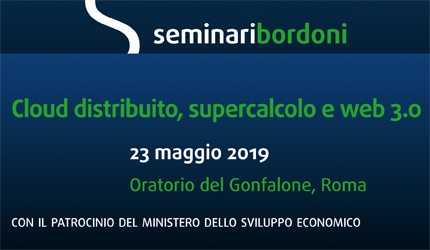
Thanks to cloud architectures, business models such as Infrastructure-as-a-Service (IaaS), Platform-as-a-Service (PaaS), Software-as-a-Service (SaaS) and, more recently, BlockChain-as-a-service (BaaS) have emerged in recent years. These models have profoundly changed the structure and operation of digital markets, leading to the rise of OTT (over-the-top) companies and the concentration of many services and functions in the hands of a few global players.
Cloud architecture’s success is also a first step towards the Semantic Web, where the Internet is presented as an intelligent network of structured and connected data, accessed by “meaning” and not by location.
The development of the “cloud” has seen an increasing concentration of computing and storage resources. Large server farms, great efficiency in the management of retrieval and backup operations, but also an increase in the concentration in the market of operators able to efficiently manage these systems and an increase in the vulnerability of the systems due to the easy identification of single points of failure.
On the contrary, the development of 5G networks will enable an inverse process to the one that so far has led to the development of cloud infrastructures.
The centralisation of WEB 2.0 can be replaced by a decentralisation of computing and storage systems. Thanks to distributed ledger and distributed hash table technologies and the need to develop distributed computing power at the periphery of the network (edge computing), the development of a “distributed web” will increasingly compete with the centralisation of the cloud model.
What are the pros and cons of the two scenarios? Which of the two is the preferable scenario for a democratic and efficient development of the Web? What is the true practical potential of distributed computing or storage systems such as iEx.ec or Inter Planetary File System (IPFS)? An attempt to answer these questions will be made during the third Bordoni Seminar scheduled for 2019.
Programme (Italian version)
Programme (Italian version)
pdf-
-
Registrazione e Welcome coffee
-
-
-
Apertura lavori
Antonio Sassano
-
-
-
Key Note
“iExec: towards blockchain-based decentralized cloud computing”
Gilles Fedak
-
-
-
Interventi
Giorgio Ventre
Consiglio di amministrazione, Fondazione Ugo Bordoni
Gilberto Nava
-
-
-
TAVOLA ROTONDA “IL SUPERCALCOLO NELLA RICERCA IN ITALIA”
Modera
Francesco Matera
Fondazione Ugo Bordoni
Partecipano
Fabio Antonelli
Head of OpenIoT Research Unit, Fondazione Bruno Kessler
Slide di Fabio Antonelli pdfGiuseppe De Pietro
Direttore, ICAR (CNR)
Slide di Giuseppe De Pietro pdf
-
-
-
TAVOLA ROTONDA “IL CLOUD NELLA PA: PROSPETTIVE DI SVILUPPO”
Modera
Raffaele Barberio
Direttore, Key4Biz
Partecipano
Adriana Agrimi
Dirigente Area Trasformazione Digitale, AgID
Paolino Iorio
Direttore Service & Technology Innovation Hub, Sogei
Slide di Paolino Iorio pdfGianluca Mazzini
Direttore generale, Lepida
Slide di Gianluca Mazzini pdfPietro Pacini
Direttore generale, CSI Piemonte
Anna Sappa
Direzione centrale organizzazione digitale, INAIL
Slide di Anna Sappa pdf
-
-
-
TAVOLA ROTONDA “VERSO IL CLOUD DECENTRALIZZATO: LA VISIONE DELLE IMPRESE”
Modera
Luca Rea
Fondazione Ugo Bordoni
Partecipano
Bruno Bianchini
Head of Infrastructure and Technological Services, Enel
Pier Luigi Dal Pino
Direttore centrale relazioni istituzionali e industriali, Microsoft
Riccardo Mascolo
Head of Strategy and Business Development, Ericsson Italy
Slide di Riccardo Mascolo pdfStefano Onofri
CEO, Cubbit
Monica Pilleddu
Regulation Manager – Regolamentazione mercato servizi digitali, Poste Italiane
Michele Zunino
CEO, Netalia
-
-
-
Conclusioni
Marco Bellezza
Consigliere Ministro dello sviluppo economico
-
Read all